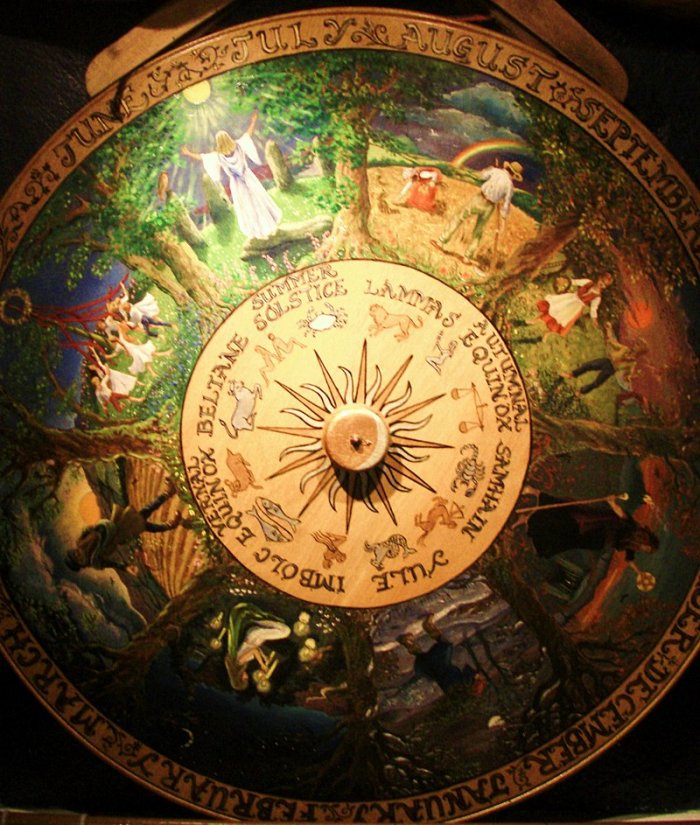Never-Ending Battle Of The Oak King and Holly King – Confrontation Of The Light And The Darkness
A. Sutherland - AncientPages.com - In pagan folklore, Holly King presides over the six months of the year following the summer solstice. Celtic myths describe his fight against his brother, Oak King.
The two brothers personify the changing seasons - winter and summer -in many folklore and mythological traditions.
Credit: Adobe Stock - fluenta
The fight between King Holly and King Oak symbolizes the clash between the cold season (the winter period) and the hot season (the summer period). It concerns solar light and darkness, crop renewal, and successful growth. It is an endless "battle" reflecting the year's seasonal cycles; however, it is not only about solar light and dark but also crucial changes in crop, renewal, and growth. The kings remain in a never-ending "battle," reflecting the seasonal cycles of the year.
The Oak King is ruling the waxing year, and the Holly King is leading the waning year, having attributes like holly and other evergreens. During the warm days of Midsummer, the Oak King is mighty, and the Holly King must accept his brother's dominance.
He waits patiently to regain power at the Autumn equinox. Then, he has his strength peak during mid-winter. The Oak King is reborn during this time with a new capacity to meet the Spring equinox and preserve the legacy. Many consider that the Holly King and Oak King story originated in Celtic mythology.
The Celts divided the year into two periods and made Holly King and Oak King the representatives of these two seasons. Let us also remember a clear and dark season among the Celts, thus marking the wheel of time.
The two brothers compete to determine who will have the right to reign the longest.
Wheel of the Year -Museum of Witchcraft and Magic, Boscastle, Cornwall, England. Image credit: Midnightblueowl - CC BY-SA 3.0
According to Celtic myth, the solstice marked a battle each year between the Oak King, a representation of light, and the Holly King, who represented the dark. Each year, the Oak King wins this battle at the winter solstice, and daylight is slowly coming back until it is time to do battle again - at the summer solstice.
During the fight at Yule, Holly King surrenders his life to the young light Oak King, God of the Waxing Year, who cuts off his brother's head and ascends the throne for the next six months until mid-season.
The two figures are usually portrayed in two different ways. The Holly King frequently appears similar to Father Christmas (Santa Claus) and can be considered his precursor. Dressed in red garments with sprigs of mistletoe in his tangled hair, he is occasionally depicted driving a team of eight stags.
The Holly King is also associated with a holly mace that serves as a wand. Holly leaves adore his head instead of his hair. A holly mace that serves as a wand is another attribute of the king, and holly leaves decorate his head instead of hair. On the other hand, the Oak King, as a fertility god, sometimes appears as the Green Man or another forest lord.
The battle of these two kings fighting for supremacy (at least for six months) each year is sometimes a question of a certain tolerance towards his opponent, who, following his defeat, must be patient until the following mid-season to regain his place on the throne.
The fight between the two brothers at the end of each season is symbolic because it celebrates the light, which takes control over the darkness. King Holly and King Oak symbolize the solar cycle, which rises with the new season and sets with the end of the other season.
In one way or another, it is all about the continuation of the cycle, alternating the power to King Oak and then again to Holly King.
Updated on March 12, 2024
Written by – A. Sutherland - AncientPages.com Senior Staff Writer
Copyright © AncientPages.com All rights reserved. This material may not be published, broadcast, rewritten or redistributed in whole or part without the express written permission of AncientPages.com
More From Ancient Pages
-
 Uplistsikhe Devastated By Genghis-Khan Hordes But Once City-Fortress Of Queen Tamar
Featured Stories | Apr 12, 2021
Uplistsikhe Devastated By Genghis-Khan Hordes But Once City-Fortress Of Queen Tamar
Featured Stories | Apr 12, 2021 -
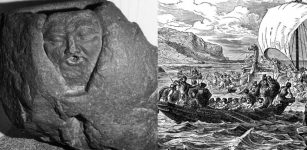 Ancient Mysteries Of Chicago: Is The Puzzling Waubansee Stone A Neglected Pre-Columbian Artifact?
Artifacts | Mar 4, 2017
Ancient Mysteries Of Chicago: Is The Puzzling Waubansee Stone A Neglected Pre-Columbian Artifact?
Artifacts | Mar 4, 2017 -
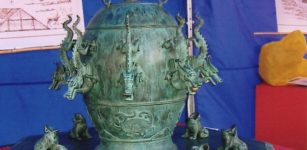 Zhang Heng Seismograph Could Record Earth’s Dangerous Movements
Artifacts | Mar 8, 2023
Zhang Heng Seismograph Could Record Earth’s Dangerous Movements
Artifacts | Mar 8, 2023 -
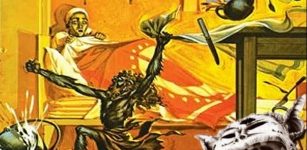 Tokoloshe: Demonic Creature That Feeds On Spiritual Energy Of Its Victims
African Mythology | Sep 9, 2020
Tokoloshe: Demonic Creature That Feeds On Spiritual Energy Of Its Victims
African Mythology | Sep 9, 2020 -
 Biskupin: A 2,700-Year-Old Defensive Settlement Of Lusatian Settlers In Poland
Civilizations | Apr 26, 2016
Biskupin: A 2,700-Year-Old Defensive Settlement Of Lusatian Settlers In Poland
Civilizations | Apr 26, 2016 -
 The Perplexing Story Of The Seven Continents And The Seven Mysterious Races – Can The Past Foretell The Future? – Part 2
Featured Stories | May 15, 2022
The Perplexing Story Of The Seven Continents And The Seven Mysterious Races – Can The Past Foretell The Future? – Part 2
Featured Stories | May 15, 2022 -
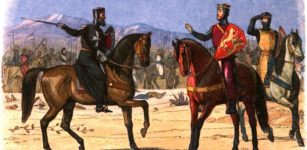 First Crusade Was Launched In 1095
Ancient History Facts | Jun 19, 2018
First Crusade Was Launched In 1095
Ancient History Facts | Jun 19, 2018 -
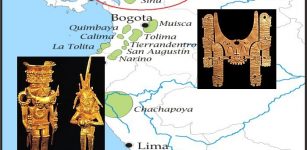 Malagana Remarkable Sophisticated Goldwork: Legacy Of Colombian Pre-Hispanic Culture
Artifacts | Nov 14, 2018
Malagana Remarkable Sophisticated Goldwork: Legacy Of Colombian Pre-Hispanic Culture
Artifacts | Nov 14, 2018 -
 Were The Knights Templar Guilty Or Innocent Of The Crimes Laid Against Them?
Featured Stories | Dec 24, 2020
Were The Knights Templar Guilty Or Innocent Of The Crimes Laid Against Them?
Featured Stories | Dec 24, 2020 -
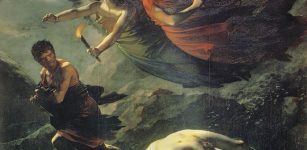 Nemesis: Winged Goddess Of Justice And Revenge
Featured Stories | Jun 2, 2016
Nemesis: Winged Goddess Of Justice And Revenge
Featured Stories | Jun 2, 2016 -
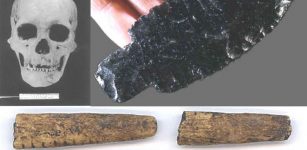 Buhl Woman Of Idaho: One Of The Oldest Skeletons In North America
Civilizations | Jun 3, 2023
Buhl Woman Of Idaho: One Of The Oldest Skeletons In North America
Civilizations | Jun 3, 2023 -
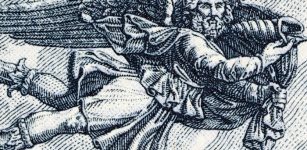 Boreas – Mighty North Wind God In Greek Mythology
Featured Stories | Mar 26, 2023
Boreas – Mighty North Wind God In Greek Mythology
Featured Stories | Mar 26, 2023 -
 Mysterious And Sacred Intihuatana Stone Of The Inca Was More Than Just An Astronomy Calendar
Archaeoastronomy | May 8, 2018
Mysterious And Sacred Intihuatana Stone Of The Inca Was More Than Just An Astronomy Calendar
Archaeoastronomy | May 8, 2018 -
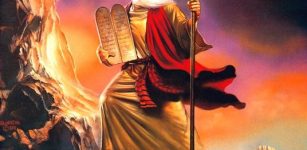 The Controversial History Of Moses – Who Was He Really?
Biblical Mysteries | Sep 13, 2015
The Controversial History Of Moses – Who Was He Really?
Biblical Mysteries | Sep 13, 2015 -
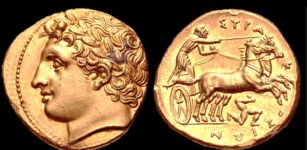 Agathocles Of Syracuse: Sicilian Ruler Who Committed Numerous Crimes Saved And Extended Sovereignty Of Sicily
Featured Stories | Jul 26, 2019
Agathocles Of Syracuse: Sicilian Ruler Who Committed Numerous Crimes Saved And Extended Sovereignty Of Sicily
Featured Stories | Jul 26, 2019 -
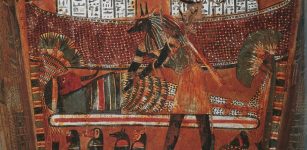 Immortal God Anubis: Lord Of The Sacred Land, Jackal God Of Mummification
Egyptian Mythology | Sep 19, 2016
Immortal God Anubis: Lord Of The Sacred Land, Jackal God Of Mummification
Egyptian Mythology | Sep 19, 2016 -
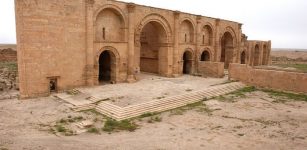 Hatra: Ancient Powerful Caravan City That Could Withstand Invading Roman Armies
Featured Stories | Dec 12, 2020
Hatra: Ancient Powerful Caravan City That Could Withstand Invading Roman Armies
Featured Stories | Dec 12, 2020 -
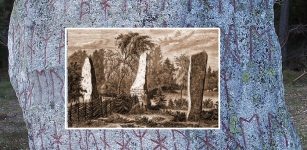 Björketorp Runestone With An Engraved Curse Is Still Untouched In Blekinge, Sweden
Featured Stories | Mar 19, 2023
Björketorp Runestone With An Engraved Curse Is Still Untouched In Blekinge, Sweden
Featured Stories | Mar 19, 2023 -
 Did A Universal Ancient Civilization Give Birth To All Other Cultures Across The World?
Civilizations | May 4, 2021
Did A Universal Ancient Civilization Give Birth To All Other Cultures Across The World?
Civilizations | May 4, 2021 -
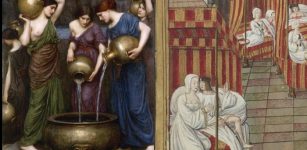 Mythical Danaides: Daughters Of Danaus Condemned In Hades To Eternal Punishment
Featured Stories | Mar 22, 2016
Mythical Danaides: Daughters Of Danaus Condemned In Hades To Eternal Punishment
Featured Stories | Mar 22, 2016


